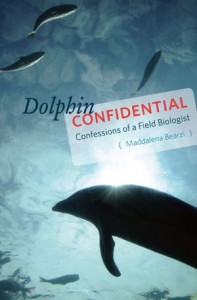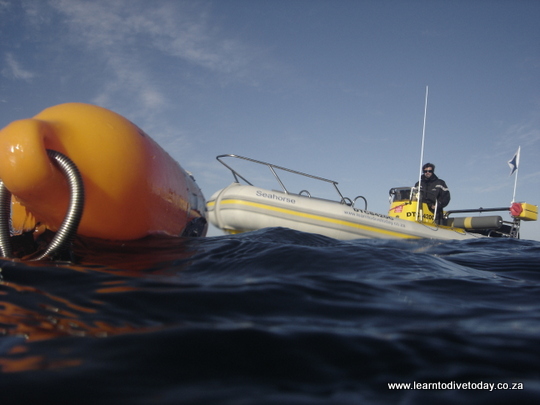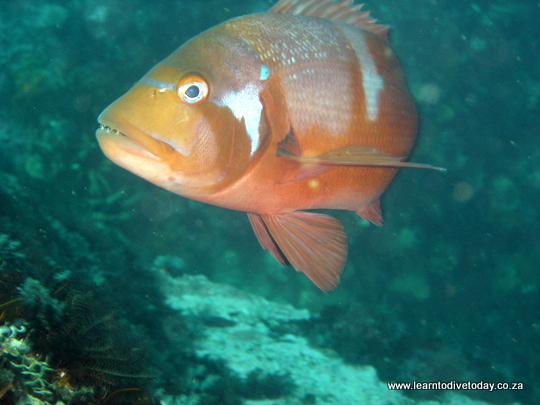
While visiting De Kelders we stayed in a guest house on the cliffs, in an upstairs room with a balcony that afforded us spectacular views of the many mother and calf pairs of southern right whales that gravitate to this area to rest and play. In terms of photographic opportunity, our balcony and a walk on the cliffs actually afforded better opportunities than our whale watching boat trip, because it is much easier to get pictures off a stationary, level surface!

Our favourite sightings were three distinctive calves. Two were white, with dark freckles. These calves darken to a greyish brindle pattern as they get older (possibly like the one in this newsletter). Three to four percent of calves are born with this colouration. These calves are generally male. The little white calves seemed less exuberant than some of the other calves we saw, sticking close by their mothers and not playing and frolicking very much. Perhaps it was my imagination (projecting feelings of otherness onto a whale… Go figure!).
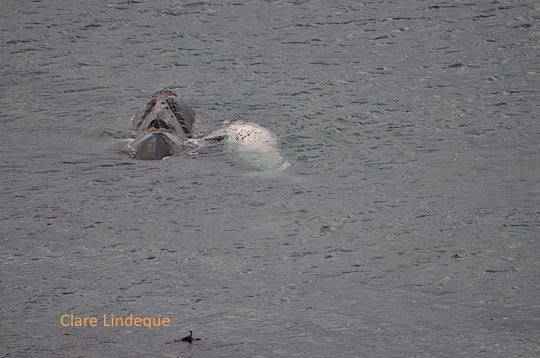
In contrast to the white calves was a baby whale that reminded me strongly of a Jersey cow. He (for the sake of argument) had a huge white patch on his stomach, which was on display for hours at a time as he wallowed on his back while slapping his fins, and rolled over and over until his mother grunted at him and (I imagine) told him to take life more seriously otherwise he’d never get a job.

We saw a fair amount of lobtailing (slapping the tail flukes on the water), spy hopping (sticking the head out of the water to look around), and a LOT of logging (lying about looking like a log). We didn’t see much breaching (leaping out of the water) – the whales only seemed to do that a bit further out to sea, in the distance – perhaps because we were observing them so close to shore where the water was shallow. We also observed the baby whales rolling over and over, and lying with one of their pectoral fins sticking out of the water, much like a seal would. They frequently slap their pectoral fins on the surface, too.

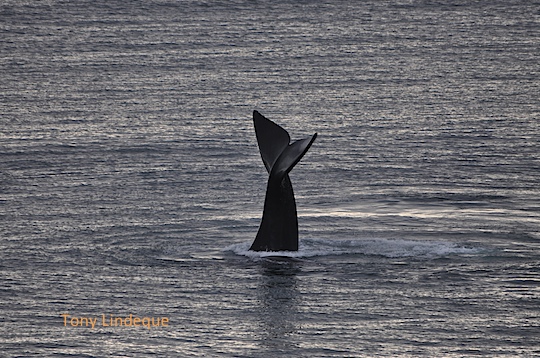
The baby whales were far more active than their mothers, who don’t eat much (if anything – I’ve seen conflicting research on this) while in South African waters. They live off their blubber reserves while providing up to 350 litres of nutritious milk per day to their offspring. It’s understandable that they don’t have energy or inclination to leap about like lunatics.
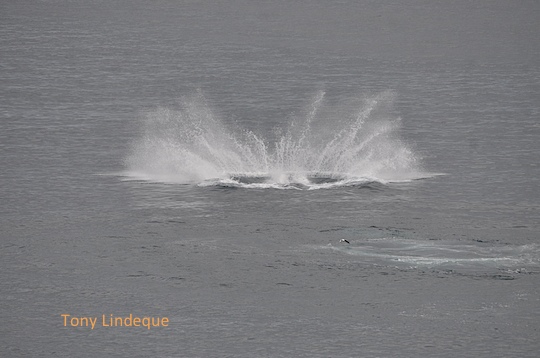
The exhalations of the whales were loud and clearly audible. They also make a sound that reminds me of old plumbing – I’m still trying to put my finger on exactly what the sound is like. It’s something like the noise when you blow across a pipe, or when you turn the water on after it’s been off for a while and there’s air in the plumbing. It’s loud and initially I thought it was a lawnmower or other mechanical implement nearby. Hearing this sound while lying in bed at night, while the whales did who knows what out in the dark sea, was magical.

We were also fortunate to see some dolphins, small pods that passed by several times and came close to the whales. We saw whales that spent hours lying in one spot, apparently resting, and others passing by our balcony at speed, seemingly on a course to somewhere important.

This trip was very good for the soul.


















